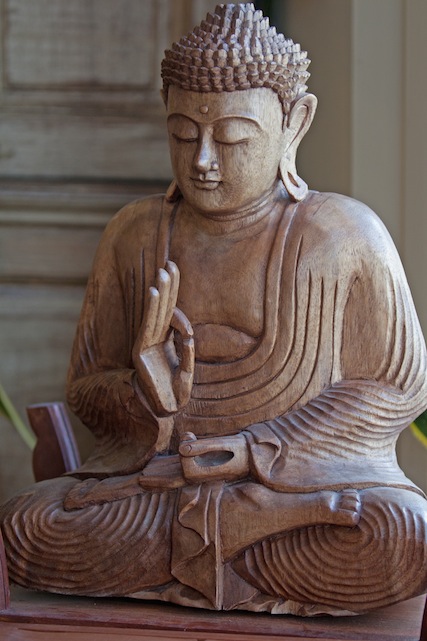Cannabis Meditation: Intention and Focus
And human love will be seen at its height.
Live in fragments no longer.
Only connect. — E.M. Forster
There can be a wide variety of cannabis meditation practices and detailed methods for spiritual awakening. In general, there are what are often described as emptiness or formless practices at one end of a continuum. Moving along that continuum you’ll find an increasing degree of form in a practice and further still along the continuum you could open up the definition of spiritual practice altogether to include walking in the woods, creative dance, making music, writing, painting, making love, or even washing the dishes.
By that open-ended definition of meditation, the key point is the intention to begin with, and then the relaxed concentration and attention you bring to the activity at hand, often appropriately labeled nowness; full presence in this moment. In calm and directed intention/attention, the plant’s amplification function can sharply open and deepen the connection.
A Power Plant
Met nakedly so to speak, cannabis can be a very powerful medicine plant. It appears though that most people find it easier to work with the amplified energy that cannabis releases by directing it toward an external focus. One of the threads weaving through Cannabis and Spirituality (the forthcoming book) is that that same energy also has the potential to deepen pure, non-thought presence. There is spiritual healing there.
Starting with something close to formless practice, when your intention is to meet the plant directly and nakedly, the simplest guidance I’ve come across is that expressed by the old crazy-wisdom cannabis master Ganesh Baba as reported by Hakim Bey, who knew Baba personally. Quoting Bey:
Here then are Ganesh Baba’s rules for smoking hemp:
1. Whether cross-legged or sitting in a chair, when smoking one should sit up straight, backbone perfectly aligned.
2. One should dedicate one’s smoking to Lord Shiva.
The basic reason for these guidelines is to make the smoker conscious and aware—to direct the attention. To smoke absent-mindedly would constitute a waste of the sacred herb.
Orgies of the Hemp Eaters, Hakim Bey and Abel Zug, p. 20
Formless and Form
It doesn’t get much simpler than that, although Terence McKenna’s suggestion for meeting the strong entheogens, “Sit down, shut up, and pay attention” might qualify. Note that Ganesh Baba’s rules don’t say much about how to work with your mind in the beflowered state. That’s where the challenge comes in for most of us, perhaps especially for us moderns of the dominator cultures with our tendencies toward mental busyness and speed and our, in general, unfamiliarity with non-material realities. It’s difficult for most of us to slow down the speed of mind and relax into nowness. When cannabis is included in the practices its amplification function can up the stakes for letting go into presence. There lies both challenge and potential.
Moving on to include a little more form, you could combine cannabis with any of a number of variations on simple mindfulness/awareness meditation techniques, what you might also call bare-attention meditation. The purpose again is to create a container for meeting presence and the space to experience the spiritual power of cannabis without competing attention-attractants. Ganesh Baba’s ‘sit up straight’ instruction will likely be too formless for a lot of us. A simple presence meditation practice might add just enough form to help practitioners connect with the amplified presence offered up by the cannabis sacrament.
. . . a clarifying of all thought, and the flowing in of the richest influences from the world around me . . . Fitz Hugh Ludlow, 1836-1870
The point of such a technique is to add as little as possible to the simple act of paying attention and being fully present in the moment, just the absolute minimum necessary to sharpen up that connection. The variation I learned many years ago seems to fulfill that function effectively. It’s known by the Sanskrit word shamatha, meaning something like “dwelling in peace,” and is similar in technique to quite a few other variations, like some of those going by the names vipassana or vipashyana for example. Basic Zen bare-attention meditation is also similar.
Put simply in this brief context, the core technique of practices like shamatha and vipassana is to gently pay attention to your breath as it comes and goes, without attempting in any way to control it. Since breathing is natural and—as things go in this material realm—about as real and non-conceptual as it gets—gentle attention on its inflow and outflow can be an excellent anchor for bringing oneself back to presence. Many experienced journeyers would say that that is where the cannabis plant is fully able to show us what it can do.
Emptiness Becomes Luminosity
Look past your thoughts, so you may drink the pure nectar of This Moment. — Rumi
There is definitely more to these practices than I’ve just described. Some sort of meditation instruction can be useful. I will also go into more detail on shamatha and other similar practices in the book. In the meantime, with intention and some discipline to stay put for a while, most of us can benefit from applying even the bare basics of sitting straight and coming back to a gentle attention on the breath whenever we catch ourselves in our heads.




Leave a Reply
Want to join the discussion?Feel free to contribute!